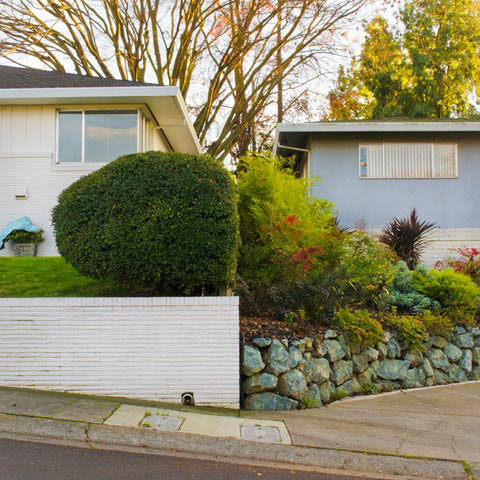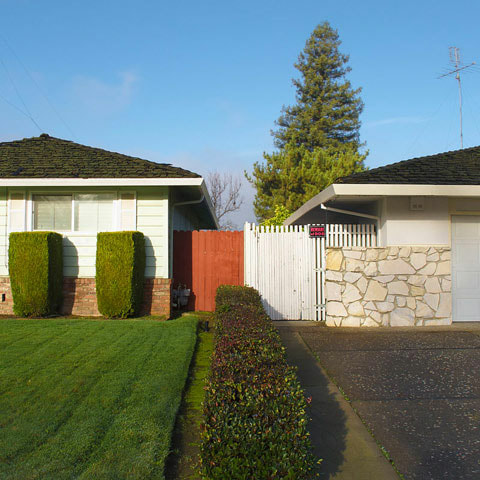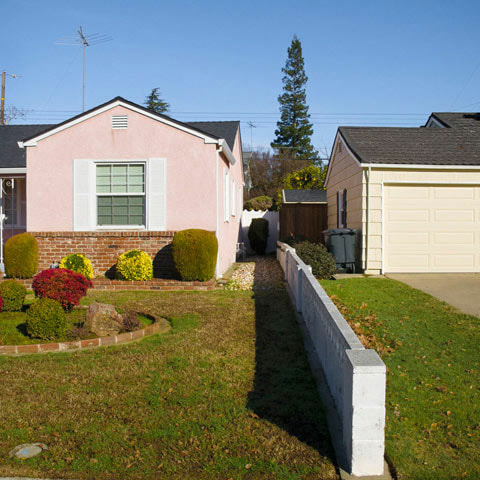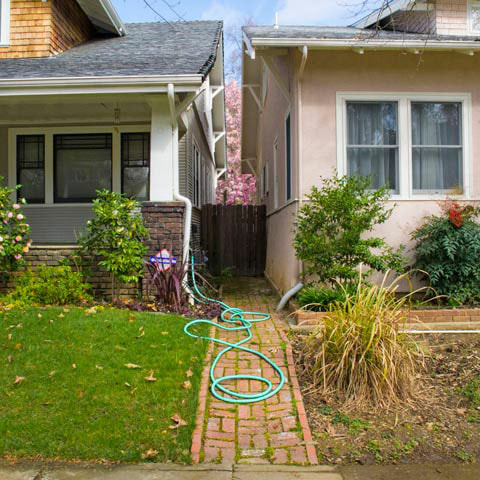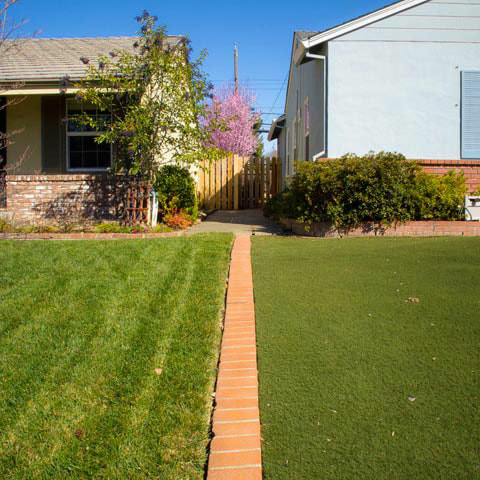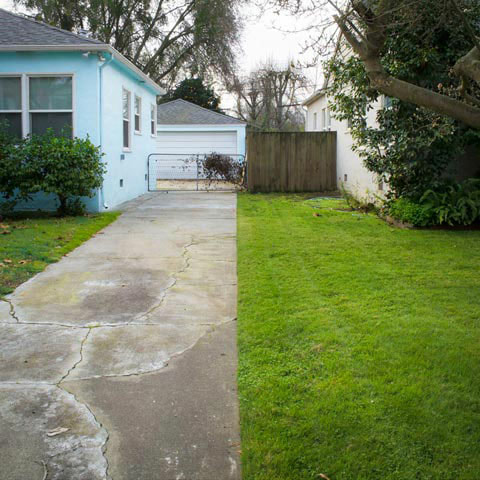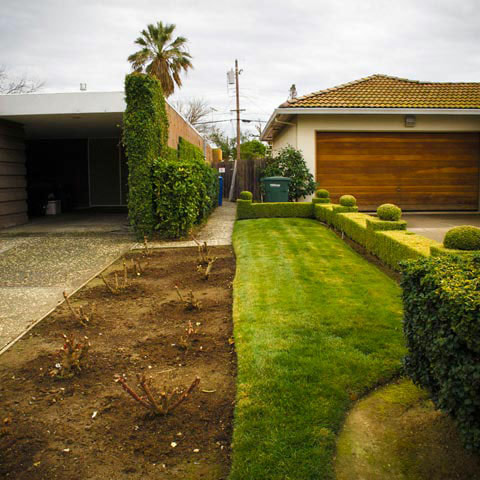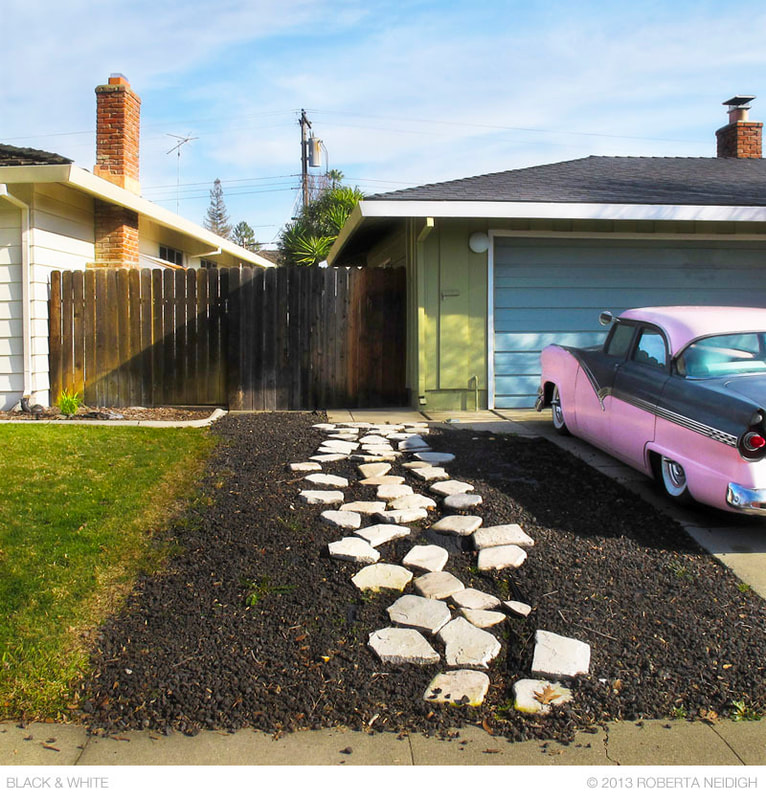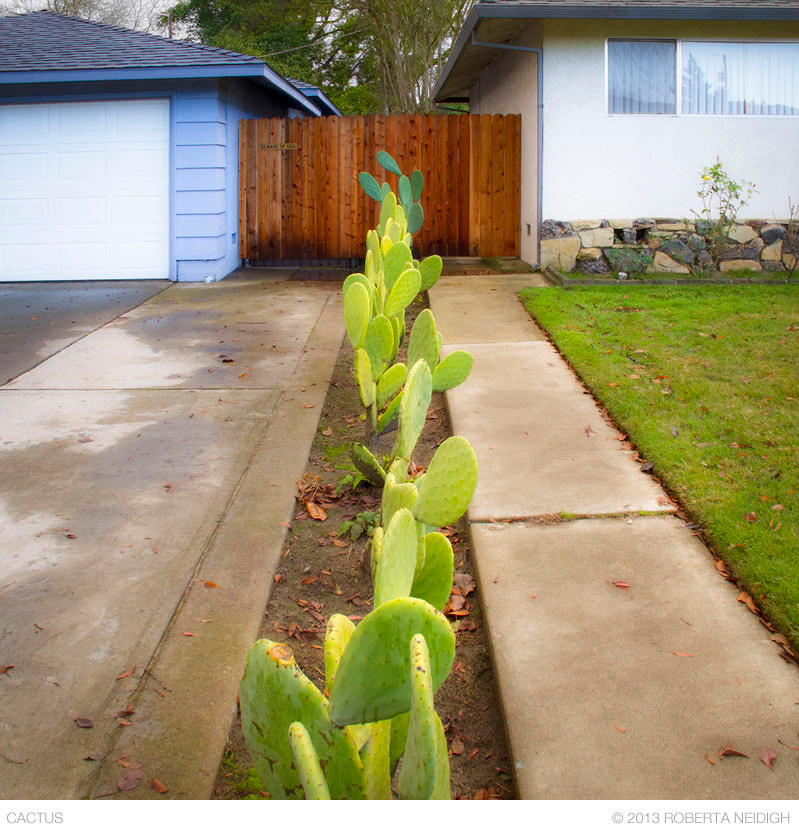START BY READING THIS!
Roberta Neidigh
Roberta Neidigh grew up on a farm in the rural Midwest, where land seemed to have no bounds. The farmhouse had been inhabited by generations of Roberta's ancestors, and her time there marked the beginning of her fascination with people, their histories, and their landscapes. She earned a BFA in Textile Design at Indiana University and subsequently settled with her husband in northern California, where she worked as an exhibiting textile artist for ten years. Photographing her first child rekindled a love for the darkroom, and Roberta began making portraits, focusing on connections between people and their environments. After raising her family, Roberta returned to the landscape in 2010. She has since shown her work in California, New York, Colorado, Pennsylvania, Vermont, Washington, Illinois and Massachusetts and currently explores the ways in which we cultivate our own public and private spaces.
PROPERTY LINE: ARTIST STATEMENT
Where two plots of suburban land meet, a visual dialogue begins. This point of contact, on the property line, reveals communication between neighbors through landscape as an extension of the self. There is no margin here. Are we connected or divided by the
place our land touches the land of another? How is this line drawn? In this body of work, I explore the way we protect our boundaries by creating a buffer in a place that has none, and how we cling more strongly to our own identity as our space nears its edge.
PROPERTY LINE: ARTIST STATEMENT
Where two plots of suburban land meet, a visual dialogue begins. This point of contact, on the property line, reveals communication between neighbors through landscape as an extension of the self. There is no margin here. Are we connected or divided by the
place our land touches the land of another? How is this line drawn? In this body of work, I explore the way we protect our boundaries by creating a buffer in a place that has none, and how we cling more strongly to our own identity as our space nears its edge.
JEF CLAES
How would you describe your work?
Mainly graphic, geometrical and colorful, though recently I’ve been drawn to making pictures in a less structural and defined way. I don’t really know why, it just feels right. I like simplicity and geometry, but I am equally drawn to rather darkish stuff.
What forms the basis of your work?
My basis is formed by landscapes and fashion. I like to find lines, colors and shapes everywhere and juggle with context, so you could say landscapes are the basis. When photographing people, I usually do the same; l’m a sucker for structure and graphic elements. It’s only recently I’ve discovered there is an other, less structured way. But in general I like to photograph people if I can set everything up; fiction’s real in my mind.
What were you aiming to do with this series?
Spring is a classic new beginning. It comes every year, and every year it’s somewhat different. Things change over the years, for better or for worse, but spring always brings the blissful promise of summer. It’s a beautiful feature for a season to bring promise. It’s that sense of anticipation and excitement I always get after those pale months of hibernation that I wanted to put in this series. It’s spring now, but it will be summer soon. Just you wait.
How did the theme new beginnings inspire you?
Spring is one of those new beginnings you can look forward to, and it’s here now. It’s universal and something everyone can relate to in their own way.
How would you describe your work?
Mainly graphic, geometrical and colorful, though recently I’ve been drawn to making pictures in a less structural and defined way. I don’t really know why, it just feels right. I like simplicity and geometry, but I am equally drawn to rather darkish stuff.
What forms the basis of your work?
My basis is formed by landscapes and fashion. I like to find lines, colors and shapes everywhere and juggle with context, so you could say landscapes are the basis. When photographing people, I usually do the same; l’m a sucker for structure and graphic elements. It’s only recently I’ve discovered there is an other, less structured way. But in general I like to photograph people if I can set everything up; fiction’s real in my mind.
What were you aiming to do with this series?
Spring is a classic new beginning. It comes every year, and every year it’s somewhat different. Things change over the years, for better or for worse, but spring always brings the blissful promise of summer. It’s a beautiful feature for a season to bring promise. It’s that sense of anticipation and excitement I always get after those pale months of hibernation that I wanted to put in this series. It’s spring now, but it will be summer soon. Just you wait.
How did the theme new beginnings inspire you?
Spring is one of those new beginnings you can look forward to, and it’s here now. It’s universal and something everyone can relate to in their own way.
THE ASSIGNMENT
For this assignment you will be demonstrating your understanding of composition and creating a cohesive series by photographing the urban/suburban landscape around you. Every neighborhood in every city in every country has its own style, culture, and uniqueness. (EVEN YOURS). Pick a overarching theme for your series of photographs. Like color, shapes, boundaries, hidden spaces, evolution, etc)
What makes your area/ the area chosen unique. You will be submitting a series of 5 photos. You will be required to intentionally use composition techniques and perspective techniques that we learned in previous assignments as a major story telling device in your photos. How does your neighborhood represent itself? Low angle harsh shadows. Does the warm glow of a sunrise represent the warmth and promising future of a new day?
You will be submitting a google slide: See Below and Attachment
Slide 1: Name, Project, Class, & Hour
Slide 2: all 5 photos
Slide 3: 1of 2 best photos
Slide 4: write of for previous photo
Slide 5: 2 of 2 best photos
Slide 6: write of for previous photo (see questions below or in example slides)
Slide 7: Self Assessment
______________
Expressive Qualities: Intention
· Write about your intention in making this work. Consider things such as what you value, a message, an experience, emotion or idea that you wished to communicate.
Composition: Content and Design Concept
· Write about your compositional decisions, referring to visible content in your artwork.
· Notice a few of the Elements of Design and at least one of the Principles of Design that are evident and write about how they have added to the effectiveness in your composition. (HERE IS A REFRESHER)
Process and Problem Solving: Personal Decision Making and Process/ Technique/Procedure
· Write about the processes, techniques and procedures you used in the creation of the work.
· Include information about resources, art materials and tools that you used.
· If you experienced a problem or challenge describe what it was and how you resolved it.
Discovery
· Write about something that you discovered during or after the making pf your artwork that might include materials, process, meaning, and/or a connection to art history.
WHAT I AM LOOKING AT WHEN GRADING:
1/3 - Story / Idea -What was your intention/purpose how do your photos represent and tell that story
1/3 - Photo - Strength of Composition, technical quality of the photo (in focus, noise, etc)
1/3 - Editing - Does you editing help tell the story? Color, crop, emphasis?
For this assignment you will be demonstrating your understanding of composition and creating a cohesive series by photographing the urban/suburban landscape around you. Every neighborhood in every city in every country has its own style, culture, and uniqueness. (EVEN YOURS). Pick a overarching theme for your series of photographs. Like color, shapes, boundaries, hidden spaces, evolution, etc)
What makes your area/ the area chosen unique. You will be submitting a series of 5 photos. You will be required to intentionally use composition techniques and perspective techniques that we learned in previous assignments as a major story telling device in your photos. How does your neighborhood represent itself? Low angle harsh shadows. Does the warm glow of a sunrise represent the warmth and promising future of a new day?
You will be submitting a google slide: See Below and Attachment
Slide 1: Name, Project, Class, & Hour
Slide 2: all 5 photos
Slide 3: 1of 2 best photos
Slide 4: write of for previous photo
Slide 5: 2 of 2 best photos
Slide 6: write of for previous photo (see questions below or in example slides)
Slide 7: Self Assessment
______________
Expressive Qualities: Intention
· Write about your intention in making this work. Consider things such as what you value, a message, an experience, emotion or idea that you wished to communicate.
Composition: Content and Design Concept
· Write about your compositional decisions, referring to visible content in your artwork.
· Notice a few of the Elements of Design and at least one of the Principles of Design that are evident and write about how they have added to the effectiveness in your composition. (HERE IS A REFRESHER)
Process and Problem Solving: Personal Decision Making and Process/ Technique/Procedure
· Write about the processes, techniques and procedures you used in the creation of the work.
· Include information about resources, art materials and tools that you used.
· If you experienced a problem or challenge describe what it was and how you resolved it.
Discovery
· Write about something that you discovered during or after the making pf your artwork that might include materials, process, meaning, and/or a connection to art history.
WHAT I AM LOOKING AT WHEN GRADING:
1/3 - Story / Idea -What was your intention/purpose how do your photos represent and tell that story
1/3 - Photo - Strength of Composition, technical quality of the photo (in focus, noise, etc)
1/3 - Editing - Does you editing help tell the story? Color, crop, emphasis?
